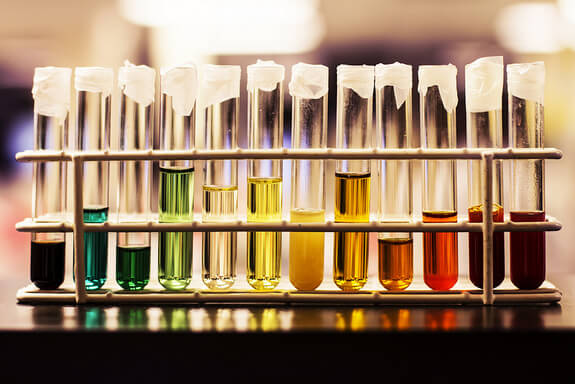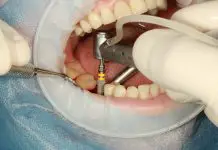Urine is a liquid produced by the kidneys and eliminated from the body through the urethra. Urination is the basic way of getting rid of water soluble chemicals from the body.
Urine composition was first described in 1971. The liquid comprises mostly water, but also has urea, sodium, creatinine and other organic and inorganic compounds (ref. 1-3).
Urine normally does not contain microorganisms (bacteria, fungi). Reference values for urine constituents used in laboratory practice are available from various sources like ABIM, Encyclopedia, Wiley and Hosp.
Daily urine amount
A person produces 1-2 liters of urine per day, but there are a number of changes to this value.

Producing too much urine (more than 2.5 liters/day) is called polyuria while the opposite, urinating less than 400 mililiters/day, is referred to as oliguria.
When a person excretes less than 100 mililiters/day urine it is known as anuria.
Urea
Urea, with the chemical formula (NH2)2CO, comprises only about 2% of the urine volume and is the most important way for getting rid of ammonia – NH3 (when in solution NH4+). Ammonia is formed as a result of amino acid break during protein degradation and it can be tolerated in very small amount because it is very toxic for humans, especially for the nervous system.
Why is Urine Yellow?
Normal urine can vary from transparent to amber, still in most of the cases it is pale yellow. Pale color is a result of sufficient hydration; when not drinking enough water, urine becomes concentrated and its color is more intense (ref. 4).
But what gives its color? This is a result of the presence of urobilin, a substance which is produced in the breakdown of hem in hemoglobin metabolism during destruction of old red blood cells.
Color Changes
Urine can be colored in almost all colors of the rainbow. Some result from pigments in the food or use of antibiotics, but can also be indicators of different diseases (ref. 5). Red urine can result from eating beets and blackberries, but it can also be an indicator of presence of blood or kidney stones and/or injury.
Carrots and vitamin C can make it orange, while vitamins B turn it yellow-green. Urine can turn blue due to the presence of artificial food colors, but also from use of medications which include methylene blue in their composition (ref. 6).
Dark-brown urine may be a symptom of liver failure or cancer, as a result of excess bilirubin – a pigment which is produced by the organ. Rarely, urine can also be violet – a condition known as “purple urine bag syndrome” which has been seen in patients with urinary catheters combined with urinary infections (ref. 7-9).
Other Changes
Normal urine is transparent; however in cases of infections it can become cloudy. Another change that can occur is getting an odor. Usually urine does not have a strong smell, still presence of ammonia-like smell may be a sign of an infection or urinary stones.
Patients suffering from diabetes mellitus have sweet smelling urine as a result of the excess sugar. Foods, like asparagus, may also cause change in the odor (ref. 10).
Urinary Tract Infections
Urinary tract consists of kidneys, ureters, bladder and urethra. Urinary tract infections are common among both sexes, however more often occur in women.
This may be due to the shorter urethra and closeness to the anus, which allows bacteria from the intestine to come in close contact with it.
Home Urinary Tract Infection Tests
A person can test urine pH and the presence of different substances (like sugar, bilirubin, ketones, proteins etc) with such home tests. They can be bought in a pharmacy without a doctor’s prescription.
The tests have an indicator that changes color depending on the urine composition. Reference sample colors are normally provided on the label. Deviations from the normal colors are also indicated on the package.
The kits have instructions and are simple to use. Do not use the kit after its expiration date as the chemicals may not work properly and change your results.
A sterile plastic cup is needed for sample collection, stopwatch for measuring time before reading the results, and the dipsticks are provided. Normally the first morning urine gives the best results.
For home test midstream urine is caught in a cup, the first portion of the urine is not used. Remember to wash your hands and clean the genital area before testing the urine.
Home urinary tests are not 100% accurate. They may show negative results, but in case you have other symptoms for urinary tract infection (like painful urination) make sure to see your doctor. The tests should not be used for self-diagnosis and are not a replacement for medical examinations.
1. Martin E, McFerran T. 2008. A Dictionary of Nursing: OUP Oxford
2. McPherson RA, Pincus MR. 2011. Henry’s Clinical Diagnosis and Management by Laboratory Methods: Elsevier Health Sciences
3. Forni Ogna V, Ogna A, et al.,. 2015. BMC Med 13: 40
4. Perrier ET, Buendia-Jimenez I, et al.,. 2015. Dis Markers 2015: 231063
5. Pagana KD, Pagana TJ. 2010. Mosby’s manual of diagnostic and laboratory tests. St. Louis, Mo.: Mosby/Elsevier
6. McDougal WS, Wein AJ, et al.,. 2011. Campbell-Walsh Urology 10th Edition Review: Elsevier Health Sciences
7. Al Montasir A, Al Mustaque A. 2013. J Family Med Prim Care 2: 104-5
8. Alex R, Manjunath K, et al.,. 2015. J Family Med Prim Care 4: 130-1
9. Tur FC, Zafer N, et al.,. 2015. Emerg Med J 32: 347
10. Kreder K, Abrams P. 2007. The Overactive Bladder Evaluation and Management








































